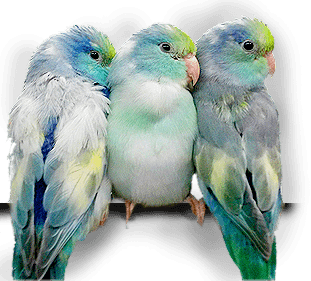We at Xtreem Parrotlets have been breeding the Turquoise Pied Parrotlets for several years and obtained our exclusive pedigree bloodline for the Turquoise Pied Parrotlet. Our birds are heavily pied and are very colorful. Xtreem Parrotlet Breeders and the turquoise pied go hand in hand.
The Xtreem Turquoise Pied Parrotlet
The turquoise parrotlets cannot be found in the wild. The turquoise gene is really a blue gene that has been genetically altered by a geneticist using selective breeding techniques. Over a period of years, the blue gene has been altered to grow to only 50% giving us an incomplete blue gene. It is the incomplete blue gene that gives us our turquoise color. The whole process of creating the turquoise parrotlet was under five years. The first creation of this rare and exotic bird took place roughly about 20 years ago.
Today we have many turquoise parrotlet mutations including, the turquoise pied variation. The turquoise pied can have several levels of color or as little as only two to three levels of color. This all depends on the breeding technique used between the male and female. The genetic pathway of the pied variation is a three gene bird. These are the blue gene, turquoise gene and a pied gene equaling a total of three genes. Those three genes are considered dominant. When put together with a five gene bird adding the yellow gene and the fallow gene, you will get a dramatically different turquoise pied variations. This may give you several different colors creating a marbling effect on its back wings along with a beautiful yellow and turquoise mix with white on its head. On its chest they may have two or three shades of light blue and or shades of white possibly with a pastel type green should be present. Thus giving you a magnificent turquoise yellow marble back multicolored parrotlet.
Using our breeding techniques of cross breeding we’ve developed what we call our Xtreem Turquoise Pied. They are best described as having a rainbow of colors including white, yellow, turquoise, blue, green, gun metal blue, sea foam green, and the list goes on. These birds also have rare splits to fallow and yellow. The Turquoise Pied Parrotlet is not often found in all clutches, which makes Turquoise Pieds of this caliber unique. Coupled with the split to fallow or yellow or both found present in the rare pied birds.
Master Breeder of Pied Parrotlets
We at Xtreem Parrotlets have several Turquoise Pied pairs breeding and still cannot keep up with the demand of this exquisite most wanted Parrotlet. The genetics of this exquisite bird are obtained from the Turquoise gene, the blue gene, yellow gene, green gene and the pied gene and sometimes the fallow gene. As this bird ages the pied markings become more dominant and colorful as their colors change. At the age 1 year and up they will reach its color and pied potential. We also have 5 year old Turquoise Pied breeders that are outstanding. Take a look in our Mega gallery the Turquoise Pieds are showing off their brilliant color plumage, as well as their pied markings.
We have worked hard, using our crossbreeding techniques and many generations to create the turquoise yellow marble pied along with several fallow variations of the turquoise pied. Xtreem Parrotlet breeders have been breeding this beautiful bird and perfecting it through selective breeding techniques and genetic knowledge for the last 10 years. It has taken many years to produce unrelated bloodlines to create these rare parrotlet birds. We now enjoy and are well known for our five and six gene turquoise parrotlets. We also have turquoise parrotlets that are split to yellow/fallow. This allows us and our clients to create a much more colorful and exciting parrotlet color mutations.
Various Shades of Turquoise Color
Turquoise pied parrotlets are probably the most beautiful of the species. Our clients throughout the United States and from around the world constantly call us for orders of these beautiful turquoise birds. As you can see from our pictures and some of our videos why the turquoise pied parrotlets are in such demand. With the incomplete blue gene that makes the turquoise color, various shades of turquoise will come out on the bird. The most frequent turquoise shades that you will see on the plumage are blue turquoise with the color turquoise broken down into various shades of turquoise. From light to medium to dark and every shade in between.
You will also see the green turquoise, from light to medium to dark and every shade in between. This is due to the degree of the incomplete blue gene and the gene pool that is present in its mate. That is why it is so important to choose a mate for your turquoise pied parrotlet that has a complementary gene pool. Once you have accomplished pairing of two unrelated parrotlets with a proper and healthy genetic gene pool, then and only then will you succeed in the breeding of such a multicolored turquoise pied parrotlet.
The Fallow Gene
We will now discuss the turquoise pied that has the fallow gene present. The fallow gene will change the color of the plumage and also the eyes of any bird. With the turquoise pied fallow variation, the color of the eyes will be red, or ruby red, along with some color change of the plumage. The plumage color value will be changed to sometimes a grayish color or perhaps even a brownish color. This will all depend on the rest of the gene pool in the bird.
We have seen great color enhancement with the fallow turquoise pied’s. The color turquoise is usually enhanced to a yellowish color, then fading into a turquoise color. Keep in mind the turquoise gene is an incomplete blue gene, now manipulated by the fallow gene, so the coloring on the plumage will vary. This combination of genetics will give us a totally unique turquoise pied parrotlet.
We have a great video that we have produced featuring a blue turquoise, and a blue turquoise fallow. You will be able to tell the difference immediately on the fallow bird, showing its ruby red eyes and also the change in color value on the plumage. Also, you will see the difference on the non-fallow bird, the dark eyes and also the difference in color value on its plumage. Take a look at our video showing the difference between a five gene turquoise pied, and a turquoise pied fallow. Again you will be able to tell the difference immediately between the two parrotlets. You will see the obvious red eyes and the effect that the fallow gene has on the plumage of the turquoise multicolored pied parrotlet. The turquoise pied non-fallow has deeper color in the plumage and dark eyes.
Xtreem Parrotlets Health, Nutrition and Breeding Resource
We encourage our visitors to check our website where you will find a resource of parrotlet health and nutrition, as well as a mega gallery of pictures, content and videos of all our parrotlets that are for sale. Our mega gallery has the largest picture selection of these beautiful birds in the United States. Please take some time to view the two videos that we have explained to you as they will be a resource for your breeding techniques. All of our parrotlets are wonderful exciting birds that can be a conversation piece, they can be taught to do tricks, talk, and make wonderful pets. They are for sale to Breeders, hobby breeders, and pet lover enthusiast.
If you have any questions about the Turquoise Pied Parrotlets for sale you can call Xtreem Parrotlets at (352) 942-5710.
See More Xtreem Parrotlets
=> Visit our Mega Gallery
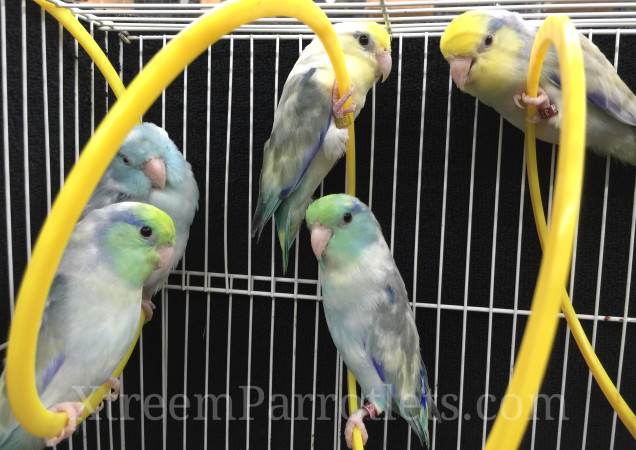 Group of Pied Parrotlets
Group of Pied Parrotlets
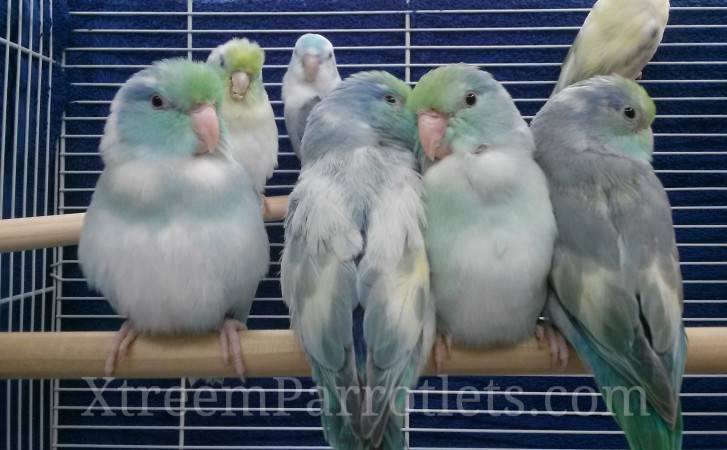 Turquoise Pied Parrotlet
Turquoise Pied Parrotlet
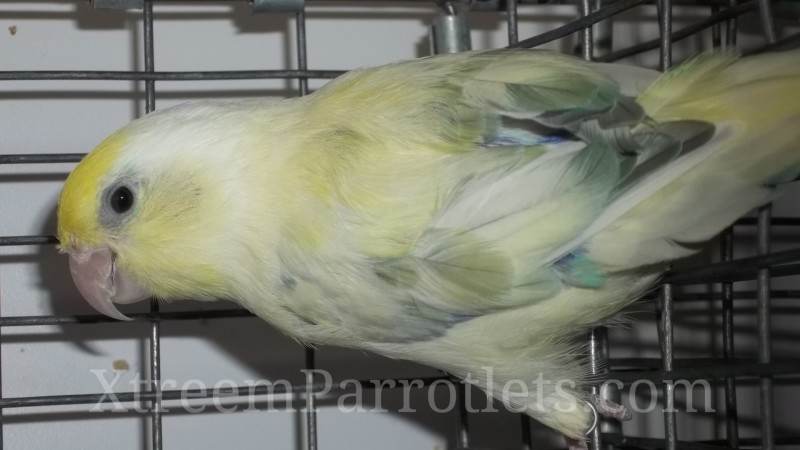 Turquoise Pied Parrotlet
Turquoise Pied Parrotlet
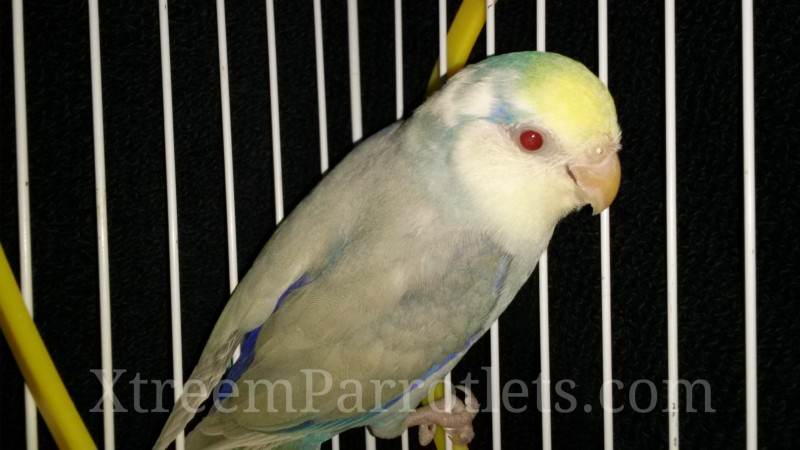 Turquoise Pied Fallow
Turquoise Pied Fallow
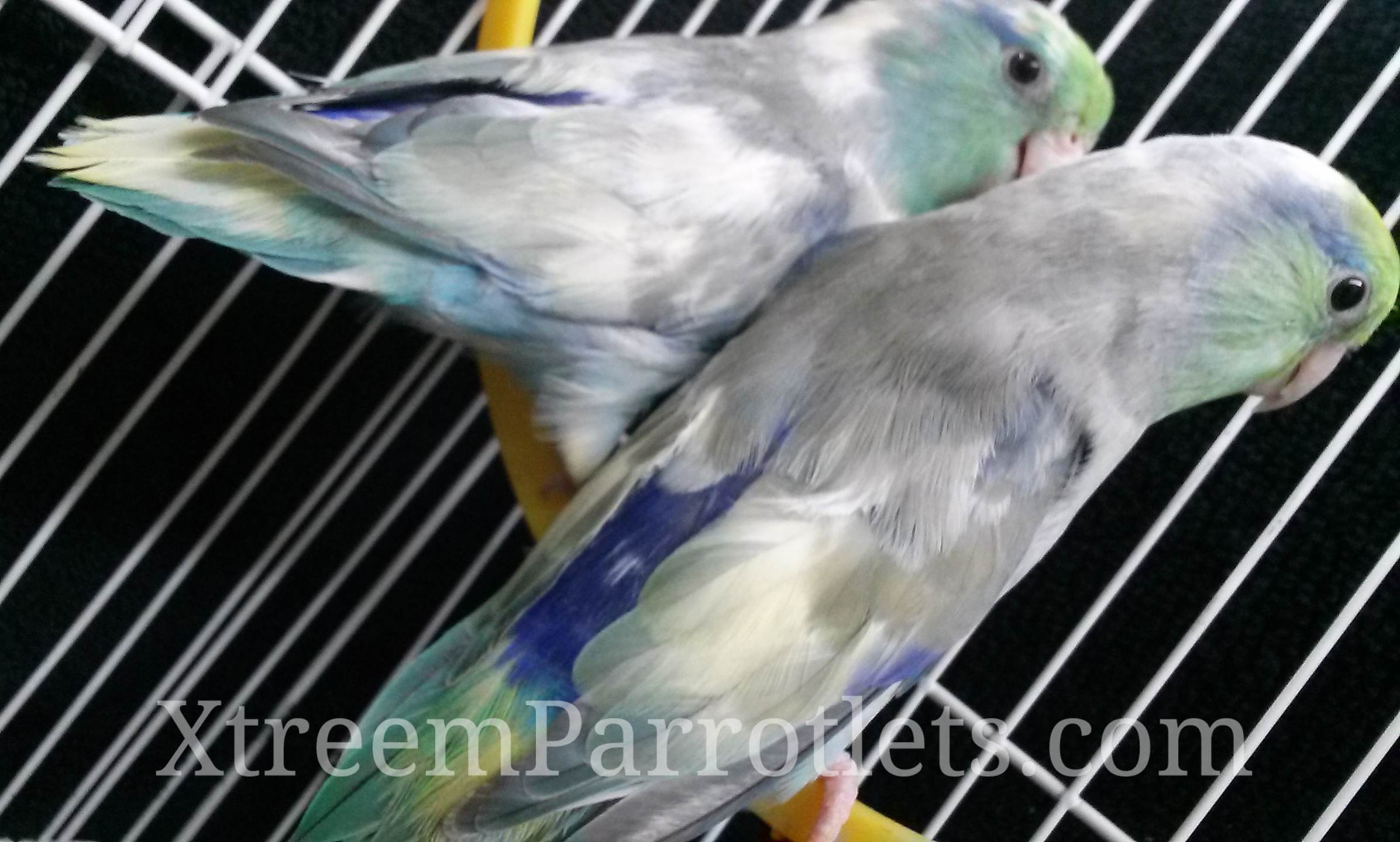 Turquoise Pied
Turquoise Pied
